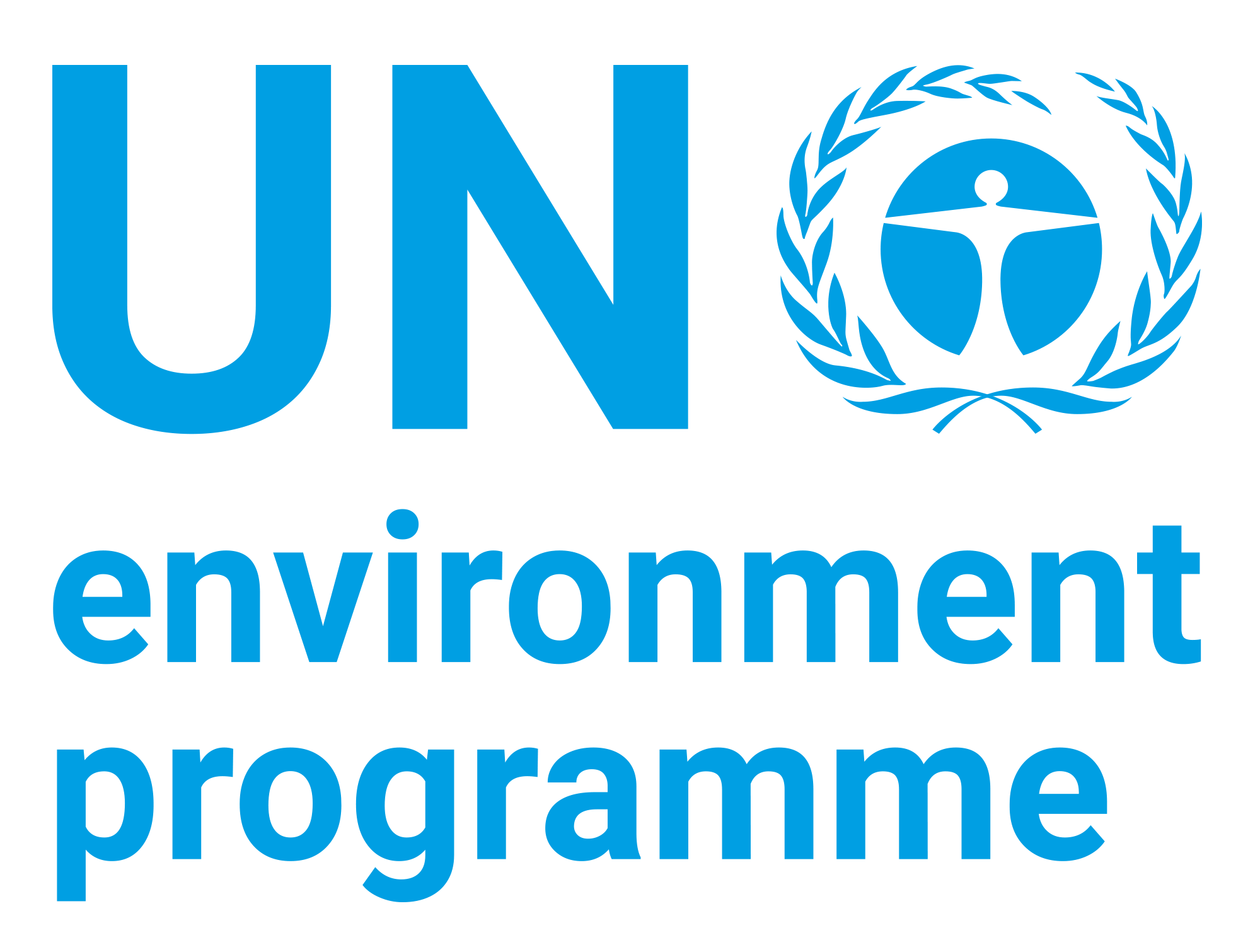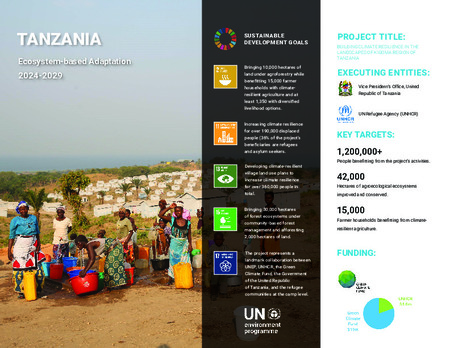| dc.contributor | Climate Change | en_US |
| dc.contributor.author | United Nations Environment Programme | en_US |
| dc.coverage.spatial | United Republic of Tanzania | en_US |
| dc.date.accessioned | 2025-02-14T09:15:55Z | |
| dc.date.available | 2025-02-14T09:15:55Z | |
| dc.date.issued | 2025-01-01 | |
| dc.date.submitted | 2025-02-11 | |
| dc.identifier.uri | https://wedocs.unep.org/20.500.11822/47066 | |
| dc.description | Tanzania’s Kigoma region hosts a population of approximately 2.4 million and over 190,000 refugees from neighbouring countries, the majority of whom live in the refugee camps of Nduta and Nyarugusu.
• These settlements, which were rapidly established in response to critical humanitarian needs, are located in areas where the surrounding ecosystems are being degraded.
• A new initiative is set to be a flagship approach on the practice of using nature-based solutions as a holistic strategy to adapt to climate change - technically referred to as ecosystem-based adaptation - especially in landscapes hosting displaced populations.
• Climate-resilient land use planning, forestry, agriculture, water use efficiency, flood and soil erosion control and policy interventions will be implemented in an integrated landscape approach. | en_US |
| dc.description.uri | https://www.unep.org/topics/climate-action/adaptation | en_US |
| dc.format | pdf | en_US |
| dc.language | English | en_US |
| dc.subject | climate change | en_US |
| dc.subject | ecosystem | en_US |
| dc.title | Project Factsheet: Ecosystem-based Adaptation in Tanzania 2024-2029 | en_US |
| dc.type | Factsheets, Infographics and Brochures | en_US |
| wd.identifier.sdg | SDG 13 - Climate Action | en_US |
| wd.topics | Climate Action | en_US |
| wd.identifier.pagesnumber | 2 p. | en_US |


